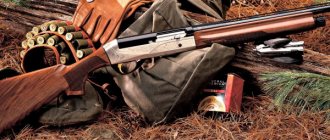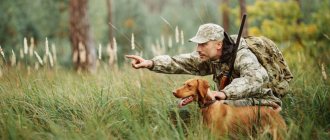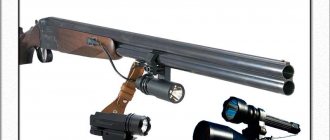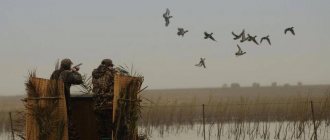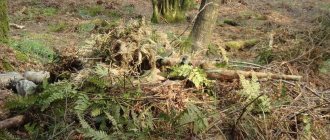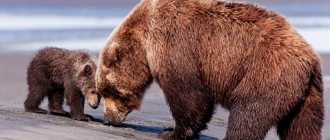Life of a wolf in the wild
Habitat
Wolves live in different climatic conditions and geographic latitudes. They are found in the steppe, semi-desert, tundra, forest-steppe, and taiga. In the mountains they are distributed from the foothills to alpine meadows. If possible, they are located near human habitats.
Wolves avoid forests that are too dense. They spread throughout the taiga following people cutting down forests for economic purposes or to organize settlements.
There are two types of wolves in Russia - common and tundra. The weight of the animal reaches 60-62 kg, and the body length is 160 cm.
Lifestyle and nutrition
The wolf is a territorial animal. During the breeding season, and often in packs, wolves prefer a sedentary life. The boundaries are marked with odorous marks, and the total territory of the flock in the winter season reaches from two hundred to a thousand square kilometers. In summer, the flock splits up, and the territory is shared with the departed predators.
In steppe and tundra areas, the wolf is forced to lead a nomadic lifestyle. This is due to the scattered food supply.
Note! The wolf never hunts near the house. To do this, he moves to a distance of 8-10 km or even more.
The wolf's diet consists mainly of ungulates - elk, deer, wild boar. Pets, including dogs, are attacked. In the absence of other opportunities, wolves catch hares and small rodents. The wolf also preys on chicks and egg laying, foxes, and raccoons. A pack of hungry wolves can even attack a bear sleeping in a den.
The wolf is an omnivore that eats berries, fruits, mushrooms, insects and reptiles. In times of famine they do not disdain carrion.
The main activity occurs at night. At long distances they communicate using howls. This signal differs in mature males, females and young animals. However, during the hunt, the wolf does not make noise, moving so as not to frighten off the object of the hunt.
When attacking a herd, predators try to get several victims. Wolves hide leftover food for the future.
The wolf is a physically strong and agile animal. Capable of reaching speeds of up to 60 km per hour. During the night, a wolf sometimes travels up to 80 km.
Researchers note the wolf's high intelligence. He is able to quickly navigate the situation, change decisions if necessary and avoid danger. Characterized by a developed ability to act in a team. The flock can be divided: one part sits in ambush, the other acts as a pen for prey. During a long chase, wolves can replace each other: tired predators are replaced by fellow tribesmen who continue the pursuit with renewed vigor.
Wolf hunting with a golden eagle
Hunting for predators with golden eagles is considered beautiful and highly sporting; at one time it was especially common in Kyrgyzstan, Kazakhstan and Turkmenistan. Hunters on horseback hunted wolves in the steppe, where the bird can see long distances well. A special cap was put on the golden eagle's head to cover its eyes. If the bird was accustomed to the word “wolf,” the hunter pronounced it, removing the cap and releasing the golden eagle. Having discovered the gray predator, the bird easily overtook it and grabbed its head and back with its claws. The hunter who arrived in time could only finish off the paralyzed beast.
Discussion on the forum:
On our forum, hunters exchange knowledge, observations and experiences. You can also participate in the discussion of different types of hunts, including this topic on the forum.
Weapons and equipment
Smooth-bore, rifled and combined weapons are used to hunt wolves. At distances of up to 50 m, a smoothbore, especially a double-barreled shotgun, is effective. If a rifle bullet, shot or buckshot travels at a distance exceeding 50 m, it is better to use a self-loading or magazine rifled weapon (7.62x39 or 5.6x39 cartridges).
It is recommended to use self-loading models only if they are adjusted to firing specific cartridges and taking into account the air temperature. Self-loading shotguns often fail when blocked or covered in snow. Pump-action weapons have the same disadvantage, and besides, they clank when walking. The best option is considered to be a repeating weapon with a box magazine and a bolt action.
The wolf is hunted with smooth-bore weapons of 12, 16 and 20 calibers. Use rifled barrels for 5.6×39 or 7.62×39 cartridges. Foreign cartridges of appropriate power are also used.
For hunting, shot charges are used, in particular 12 gauge shot. Shooting from a smoothbore is carried out with grapeshot cartridges (for example, lead buckshot with a diameter of 5.6-6.2 mm).
Hunters speak positively about Saiga carbines, which are distinguished by their accuracy and lethality. The carbine is equipped with a small magazine, which reduces the time between shots.
Hunter's clothing is selected according to the season. There is special protective ammunition on sale. It is recommended to wear a camouflage robe on top.
When hunting, you need a sharp knife used to cut up prey. If hunting is carried out at night, it is good to have a thermal imager.
Equipment selection
If hunting is planned in winter, then when choosing suitable clothing you should focus not only on its comfort, but also on thermal conductivity, because you may need to spend several hours in it while waiting for prey. It would be more correct to wear a knitted cap and a white helmet on your head. Over your basic clothes, it is recommended to wear a camouflage robe to remain as invisible as possible to the predator.
The suit should be made of fairly dense, non-rusting cloth, and, if possible, be equipped with numerous pockets for equipment and various small items that may be needed on a hike. The right shoes should be as comfortable as possible, with rubber soles and massive treads. An excellent option is soft, warm ichigi, over which you put socks made of dog fur or horsehair to make your steps almost silent.
With the right equipment, there is a greater chance that your wolf hunt will be successful.
Hunting license
In Russia, a permit is required to hunt wolves. Anyone with a hunting weapon permit can purchase it.
Three types of licenses are used:
- long-term;
- administrative;
- one-time
Long-term and administrative licenses are provided only to legal entities. One-time licenses are issued to ordinary citizens.
To obtain a license, the following documents are required:
- receipt for payment of state duty;
- copy of the passport;
- recommendation from the hunting society;
- hunting license;
- statement.
The license contains information about the hunting area, as well as the validity period of the document.
Driven hunt with flags
Hunting is a complex method of fishing that requires knowledge and high coordination of a group of hunters. It is recommended to entrust the organization of the event to an experienced person, for example, a huntsman or a hunter specializing in wolves. It is responsible for searching for the brood's resting place, knowing the areas of their holes, distributing hunters among the holes, and also organizing the enclosure.
The essence of a driven hunt is for the beaters to surround the wolves and drive them straight towards the shooters. Red flags for round-up hunting are placed at the edges of the hunting area. The installation of flags is carried out very carefully, without attracting attention: one person unwinds the skein of flags, the other attaches them to the branches.
Disguised hunters wait for the animal to appear in the so-called oklad - approximately 30 m from the flags. The beaters, leading the wolves to a rifle shot, make loud sounds. The roundup hunt sometimes involves dogs (hounds), acting as assistant beaters.
Wolf hunting with flags
Hunting for wolves with flags is carried out in winter by a large group of hunters. This is a popular and effective way to catch the gray predator. Before hunting, hunters go around wolf territories. They look for entrance and exit tracks of animals and determine their number. Then they place flags in a circle so that the animal is trapped.
The flags are made of red fabric. Their length is just over twenty centimeters, width - ten or fifteen centimeters. They are sewn to a long rope at a distance of just over half a meter from each other. For such a money-intensive hunt, you will need a lot of material.
Usually the length of the cord with flags is four or five kilometers. Success in such a difficult hunt requires good preliminary preparation. After all, it is difficult to understand where the rookery of the gray predator is located. These animals actively move across the snow over very long distances to catch prey.
Scientists have calculated that one wolf can travel more than a hundred kilometers in the tundra during the night, and sixty kilometers or more in the forest. They abandon their previous day and the next day remain to rest in a new area of the forest.
The amount of distance traveled by a wolf or a pack depends on many factors: the population of the area with people, the depth and quality of the snow, the presence of animals that are hunted by the wolf, the absence or presence of roads made by people.
They always go to flagging with bait. Privada is a treat for the wolf so that he does not leave this place. It often happens that seasoned wolves from all over the area approach there at the smell of a meat offering. After a hearty dinner, wolves usually stay for the day near the soup kitchen.
But the wolf is an intelligent animal and easily detects foreign odors. Therefore, experienced hunters use odorless mittens when baiting and do not leave behind odors or foreign objects. The most popular bait are carcasses of cows, sheep, and calves, exported with the permission of a veterinarian.
Wolf hunting with flags
It is best to throw fertilizer near a clearing at the edge of the forest. The bait should be thrown at the end of autumn, but if it was not possible, then it can be done immediately before fishing activity. Three days after laying out food, hunters become convinced that predators are coming to this place.
But the study of wolf tracks should take place no closer than three hundred meters from the bait. The best way is to climb a tree or hill and observe with binoculars. Before hunting flags, you should not set traps for wolves and other animals, or hunt from a storage shed. This will scare away the predator and he and the flock will run away for many kilometers.
Inexperienced hunters who are carried away by flagging often fail due to the fact that they do not know how to distinguish a wolf's track from a dog's. They may become confused as to whether they have discovered a fresh trace of a wolf or an old trace of this predatory beast. A wolf's print is always more straightforward than a dog's print.
You should not bother unraveling a lot of inheritances, so as not to waste precious time on this. It is enough to make a large circle, find the exit trail and then follow the predator. Near a snowmobile trail or ski track, gray predators can cheat and unnoticed go to another point in the forest. They know how to make false tracks, loops and deuces.
The flags are hung silently after all the necessary traces have been found. They hang on bushes thirty centimeters above the ground. If there are not enough flags, that piece of the forest where most likely there is no animal is cut off. The paymaster is engaged in the placement of shooters. The direction of the wind is taken into account so that it does not blow towards the wolves.
The shooters stand near the fir trees and piles of windbreaks. People should see the beast, but the wolf should under no circumstances discover them. Hunting with flags takes place in winter and therefore camouflage clothing is needed. The huntsman and shooters must wear a snow-colored suit. But if the hunt takes place in a spruce forest, then the presence of dark spots on clothes is acceptable.
Under no circumstances should you wear a bright suit, such as orange or lilac. When meeting with a hunting object, you should not panic, talk or move. You need to quietly raise the gun and fire a shot at a moment when the hunter’s movements are not visible to the animal.
After a successful shot, the hunt can be continued if there are several wolves in the forest. Sometimes they hunt the next morning. Hunting dogs should not be taken, they only get in the way during such a hunt. After the hunt, the flags are removed, as they will definitely be useful on the next hunt.
Wolf in summer
Hunting with bait (at bait)
Roundup hunt
The hunt for wolves is carried out using bait. It is advisable to place it at some elevation. In this case, the animals are more likely to approach the bait, since they feel safer on a hill. If there is a lot of prey, the flock can settle down near the bait for several days.
Note! Well-fed animals become slightly less vigilant.
Several people take part in the roundup hunt. The arrows are placed in a circle with a diameter of about 2 km. If there are natural obstacles (swamps, ravines, etc.), the circle can be reduced to 1.5 km. Hunters are located at a distance of approximately 50 m from each other. 10-12 shooters participate in the group.
Note! You cannot stand on roads or clearings. In such places, wolves are much more careful.
After the hunters line up, the beaters begin to drive the wolves towards the shooters.
Out of hiding
One of the most effective and affordable ways to catch a wolf is to sit near the bait. A bait and hiding place (usually a tower) can be set up not far from people’s homes. In this case, you need to be located no closer than 200 m from residential buildings (legal requirement). Instead of a tower, you can use a storage shed or a ladder. A storage shed is an object built on a tree from boards in which a hunter is housed.
The wolf, being extremely cautious in the forest, feels freer near populated areas. Apparently, the predator is aware of the superiority of its strength and understands that even if it stumbles upon a person, the chances that he will be armed are very small. Also, in the area of a populated area, the wolf is not suspicious of food residues, for example, rotten meat.
The best period for hunting from ambush is the winter season. For a skradka (a dugout that acts as a hunter’s location), choose a secluded place with a good view of the wolf roaming area. It is best to place the dugout on a small hill.
People get to the skradka by snowmobile or sleigh in order to leave as few traces as possible. Baits are laid out to attract wolves. Moreover, they do this even before the snow falls - in late autumn, laying out the carcasses of small animals. Immediately before the hunt, the carcasses of larger animals are laid out. The distance between the hiding place and the wolf should be 25-40 m.
Even if the ambush is located far from a human settlement, the hunter still does not have to spend much effort. You just need to wait for the appearance of the animal attracted by the bait. However, one should not forget about the wolf's cunning. There are known cases when, after many weeks of waiting, a person left, and literally on the same day the wolves took away the bait.
Secrets of the right bait
To lure a wolf, meat from animals that did not die from an infectious disease is suitable. All kinds of meat scraps are also used. The bait should be quite voluminous, since the wolf ignores small baits due to its distrust.
It’s not enough to just put the bait on the ground. Firstly, this will make the wolf suspicious. Secondly, the meat can be stolen by other animals.
The bait should be hidden in the ground. In winter, the bait is watered with water. The depth of the pit for bait is 1800-200 cm. The carcass of the animal is placed at the bottom of the pit. A wooden flooring with a hole for the pipe is created above the pit. Be sure to put insulation - it will prevent the meat from freezing, which would weaken the smell.
The pipe is plugged with a rag so that the smell is concentrated in the pit. Immediately before the hunt, the hole is opened and the smell rushes out.
In winter it is not always easy to dig a hole. Therefore, the animal’s carcass is placed on the ground and covered with snow. Moreover, part of the carcass is left in plain sight.
To enhance the smell, use the following recipes:
- A mixture of May beetles. Place 200 g of ghee in a clay pot, a layer of beetles, then a layer of butter. The pot is tightly covered with parchment and left in the sun until the organic matter decomposes.
- A mixture of raw fish and blubber. Place chopped fish in a clay vessel and add fish oil. Fish, having decomposed in fat, has a very pungent odor. The smell is further enhanced by adding musk (4 g per liter) and 3 g of anise oil.
- A mixture of raw liver or lung with anise. For 1 kg of meat products add 5 g of anise. The container is left in the sun until the meat decomposes.
- A mixture of ground hare with cow butter (400 g), fish oil (100 g), musk (25 g). Leave the mixture in the sun in a glass container for 8 weeks.
- A mixture of animal blood (3 parts) with magnesium sulfate (1 part) and Glauber's salt (200 g of water with a teaspoon of salt per liter of blood). Using the solution, a blood trail of a wounded animal is faked.
At the lair
Finding a Lair
To breed offspring, dens are created. These include rocky crevices, thickets and other secluded places. Sometimes wolves take over badger holes. They very rarely dig holes on their own.
The den is the home of the female and the wolf cubs. The male practically does not use the den.
In Russia, she-wolves give birth in late April - May. During the first two weeks, she-wolves are close to the cubs in dens. Males bring food.
The best time to find a den is May. Before doing this, it is recommended to ask local residents (especially shepherds, foresters, tractor drivers) about the location of wolf litters in the past year. They search for wolves by following tracks on roads and paths. The marks are especially noticeable on the grass in the morning dew. It makes sense to look for tracks near water sources where wolves come to drink. Wolves also leave trampled grass, animal bones, and droppings.
They go out in search of the lair at dawn. It is important to remain quiet while searching.
Shooting at the lair
It is recommended to go hunting near the den with a partner or group. It is difficult to independently get wolf cubs located in a rock crevice or a badger hole.
You need to have a gun and small buckshot ammunition with you. You will also need a bag, an ax and a shovel (for digging a hole).
The ambush method is used when a lair is discovered. A wolf cub is used to lure a wolf. They put a metal collar on him and tie him to a cable near the den.
The hideout is set up in the storage shed. Another option is also possible: the wolf cub is tied on the bank of a river (lake), and a hiding place is set up on the other bank (at a distance of 25-50 m).
This method of baiting a wolf cub is also used: one hunter drags it from one point to another in a large circle, returning to his partner. The second hunter lies in wait and waits for an adult wolf to follow the wolf cub's trail.
Hunting a wolf at the lair
Wolves create wolf dens to breed their offspring. Only females and wolf cubs use the den; male wolves do not use the den. Wolves use ravines, thickets, and badger holes for dens. She-wolves give birth at the end of April - May. For two weeks, the she-wolves stay in the den next to the cubs.
The best time to find a den is May. Before looking for a den, you should ask local residents about where they met wolves last year. When searching for a den, they look for wolf tracks left on roads and paths; wolf tracks are especially noticeable in the grass in the morning dew. They carefully check the banks of reservoirs where wolves can come to drink. It is best to look for a wolf's lair early in the morning, and be sure to remain quiet.
Most often, two people go hunting near the den. A partner can help get wolf cubs out of a crevice or badger hole. They take with them a gun, cartridges filled with buckshot, a bag, an ax and a shovel.
Having found the wolf cubs, they are placed in a bag. In order to catch an adult wolf, a wolf cub is used as bait; for this, a metal collar is put on it and tied to a cable near the den. A hunter with a gun lies in wait not far from the wolf cub and waits for the wolf to come within shooting distance.
Hunting using animals
Beagle dogs
The best time for hunting with hounds is summer (until the end of August), when the wolf cubs have not yet matured. When dogs appear, the wolf cubs hide in the grass, so it is not difficult for the hound to find them.
When hunting with hounds, many factors must be taken into account, including the nature of the terrain, the location of the den, and wind direction. The hunt begins with one of the hounds descending to the den. After finding it, the dog gives a voice, to which the rest of the dogs are sent. The fishing begins.
In wet weather, pay special attention to wolf tracks visible on the ground. If the weather is dry, they rely on the behavior of dogs: when they sense an animal, they bristle, growl, sniff the bushes, and begin to follow the trail.
When approaching the lair, they keep their weapons ready. Wolves almost always abandon their cubs in case of danger. Therefore, if the adults have left, there is no point in lying in wait for their return.
Hunting with greyhounds
The Russian Borzoi is a recognized wolfhound. The dog has grace, and its pursuit of wolves looks very impressive. From the outside it seems that the greyhound does not run, but flies above the ground. The most important quality of a greyhound is not even absolute speed, but explosive power - the dog accelerates to 80-90 km per hour in a matter of seconds. Therefore, the target of bullying has little chance of leaving.
The classic use of greyhounds describes an example of the organization of hunting in pre-revolutionary Russia. First, the hunter looked for the wolves' lair. Next, the servants brought the greyhounds to the edge of the forest (island). At this time, the hunter wound up the hounds to send them directly to the den. The goal of the hounds is to separate the brood. In this case, the greyhounds, having divided themselves (there may be several dozen of them), drive the wolves to several holes at once (places where hunters are waiting for the wolves).
Hunting from a sled was also practiced. Seeing a wolf, the hunters surrounded it and moved in a circle, gradually reducing the diameter of the circle. As soon as the distance became convenient for an attack, the greyhounds were released.
A special feature of hunting with greyhounds is the absence of wounded animals. There are two options: the wolf was caught or the animal managed to escape through rough terrain, where the greyhound loses its speed advantages.
Hunting with a golden eagle
When hunting a wolf, they use a bird of prey from the order Accipitidae - the golden eagle. This is the largest eagle. Eagle hunting is especially common in Asian countries.
Females are used for hunting because they are larger than males. Having found a wolf, hunters give a prearranged signal. A special bang (berkutchi) lowers the bird. The bird rises high into the sky, sees a wolf and falls down like a stone - right on the animal. The power of a golden eagle is enough to defeat a wolf. Having knocked down the animal, the golden eagle pecks out its eyes. The hunters approaching finish off the wolf with knives.
Wolf hunting with huskies
This species is used in the spring and summer, and most often huskies are used to destroy wolf cubs and young wolves in the place where the den is located. The dog is looking for a scent, and therefore it is best to start hunting early in the morning, in the dew. Having found the location of the wolf's lair, the hunter shoots several times in the air and then releases the husky. Adult wolves are afraid of shots and immediately leave the nest, running far away. Wolf cubs and young animals also run, but hide nearby, where the husky finds and strangles them. The dog must be strong and strong, it is better if it is not alone. However, there is no danger even for a lone husky - despite the fact that young wolves are sometimes larger than her, they are weaker and, most importantly, more cowardly.
Traps and snares pose a real danger to dogs, and therefore it is strictly not recommended to use huskies in areas where they are placed.
Hunting using vehicles
From a helicopter
Hunting from a helicopter is the most effective, but also the most expensive way of hunting. Moreover, this method is difficult for the shooter: he must take into account not only the movement of the wolf, but also the flight path and air currents. They set off on a flight already knowing the nature of the terrain and the places where wolves are likely to be present. All information is plotted on the map and a route is drawn up.
Two groups of hunters take part in helicopter hunting. One part is on the ground, looking for wolves. The second is in a helicopter. Communication is carried out via radio. If necessary, a helicopter descends to the ground and hunters conduct reconnaissance on the ground.
Hunting by helicopter is carried out from early February to mid-March. Choose days with good weather. On average, the flight altitude is 10-150 m, which allows you to clearly see the terrain. When wolves are detected, the helicopter reduces its speed to a minimum and approaches the target. The hunter opens the window and prepares to shoot. Wolves almost always run away from a helicopter in a straight line, which makes it easier to hit. They shoot with large shot or small buckshot with a small accuracy of fire.
On a snowmobile
Hunting on a snowmobile is carried out in winter (January, February). Optimal conditions are after a strong storm. Fresh snow preserves the wolf's tracks, making the task of finding it easier.
Note! The wolf is able to distinguish the direction of movement of a snowmobile by sound.
Hunting tactics consist of exhausting the predator, preventing the all-terrain vehicle from overheating. The snowmobile follows the beast and increases speed only when the wolf begins to gallop. The hunter must cut off the wolf from all kinds of natural shelters, so it is necessary to study the area in advance. Having caught up with the animal, they walk around it from the side, removing the gun from the shoulder. The shot is fired after careful aiming. You should catch up with the gray predator by walking around it from the side and at the same time taking the gun off your shoulder as you go. You need to shoot only after taking careful aim. The effectiveness of the shot is largely determined by what kind of buckshot is chosen. It is better to use buckshot of at least 7.55 mm.
Note! In a critical situation, a wolf can stop running away and attack a person. Therefore, weapons should be at hand.
From a snowmobile
Recently, this method has gained great popularity. Wolf hunting on a snowmobile is carried out in two winter months - January-February, since most often there is not enough snow in November or December. The best time is the first day after a powerful storm. Recently fallen snow cover preserves fresh tracks well, so the hunter can track a wolf for a long time and with great success.
Surprisingly, a wolf, hearing the sound of a snowmobile from afar, can distinguish whether it is moving at a calm pace or rushing straight at it at high speeds. Even at minimum speed, this vehicle moves faster than a gray predator running at a trot.
The beast must first be exhausted, and only if it starts to gallop, increase the speed. At this time, the hunter sees the prey and can catch up with the prey without overheating the snowmobile engine. In this case, it is necessary to study the area well in advance, otherwise the animal may run into the nearest ravine, where it will be impossible to capture it with this type of equipment.
The task of a shooter hunting on a snowmobile is to cut off the wolf from such shelters, and therefore he needs to constantly have a map at hand, while not losing sight of the prey. You should catch up with the gray predator by walking around it from the side and at the same time taking the gun off your shoulder as you go. You only need to shoot with careful aim. In this case, buckshot of at least 7.55 millimeters is used, which must be equipped independently.
The wolf will run away as long as it has strength, but then it may suddenly turn and go straight to the hunter. At this time, everything is decided by a person’s quick reaction, as well as a reliable weapon and, of course, luck. Sometimes on such a hunt it can come down to a knife, so it’s better to keep it handy.
Other hunting methods
Stealth
Stealth hunting is one of the most difficult ways to catch a wolf. The reason is good vision, hearing, sense of smell and suspicion of this predator. Experienced hunters can get close to the animal's resting place in suitable weather conditions. The best option is windy weather with snowfall.
Stealth hunting begins early in the morning. Following the tracks found, the hunter goes after the animal.
Wolves move with the wind, but at some point they can also go against the wind (bypassing an obstacle). At this moment, the hunter stops following the trail so as not to be detected.
The hunter positions himself as if the wolf is in an imaginary circle. Next, the approach to the hunting object begins. At any moment the hunter is ready to shoot, as circumstances can change instantly.
Note! Stealth hunting implies special secrecy, and therefore a camouflage suit is needed.
Shooting is carried out from 40-50 m. The first shot is immediately followed by the second.
Choosing the right weapon
For hunting such a predator, both smooth-bore and combined or rifled hunting weapons are equally suitable.
For intended shooting from a distance of up to 50 m, it would be more correct to choose a 12, 16 gauge double-barreled shotgun with several trigger mechanisms.
With a range of more than 50 meters, you should give preference to self-loading weapons chambered for 5.6x39 and 7.62x39 cartridges.
If it is not known in advance where the predator will be found, it is recommended to choose two or three-barrel combination options.
Luring by sounds
Wabu hunting
Waba is an imitation of a wolf's howl. The task is to determine the location of the flock. Three or four people participate in the hunt. The group is searching for the whereabouts of wolves, but the main role is played by the jacker, which makes a sound that imitates the howl of a wolf.
The hunt for waba begins with the jacker giving a signal. Wolves respond to it or approach the sound to the place where the howl comes from. After giving the signal, the wafer moves a certain distance (60 steps) downwind. Hunters greet approaching wolves with shots.
Hunting with decoy
A type of fishing that imitates howls is hunting with decoys. In this case, a device is used that creates a sound similar to the sounds made by various animals and birds. These can be both feeding and mating signals. The purpose of working with a decoy is to lure wolves to these sounds.
Wolf hunting can be done in a variety of ways. Some of them are easier to implement, others require many years of experience and hunting skill. The choice of a specific method is determined by the skills of the hunter, his technical equipment, terrain conditions and season.
Hunting at the lair
An ambush is used when a wolf's den is discovered. To bait a wolf, it is best to catch a wolf cub and use it to attract an adult. A metal collar is put on the wolf cub, after which it is tied to a steel cable near the den.
The hiding place must be arranged in the form of a storage shed. If this cannot be done, then the wolf cub should be left tied on the shore of the reservoir, and the place where the hunter will be located should be arranged on the opposite bank. But the optimal distance between the wolf cub and the hunter should not be more than 25 m. The wolf cub can also be tied up, put in a bag, and hung not far from the hiding place.
Another method used when hunting a wolf is that one of the hunters drags the wolf cub from the den itself to a certain place, where it makes a circle and returns to the second hunter. The second one sits all this time near the trail of the wolf cub, along which the adult wolf will follow.
There are other ways to catch a wolf: hunting with dogs, with golden eagles, and a roundup with flags. You can familiarize yourself with them in more detail in the previously published article “Wolf Hunting”.
